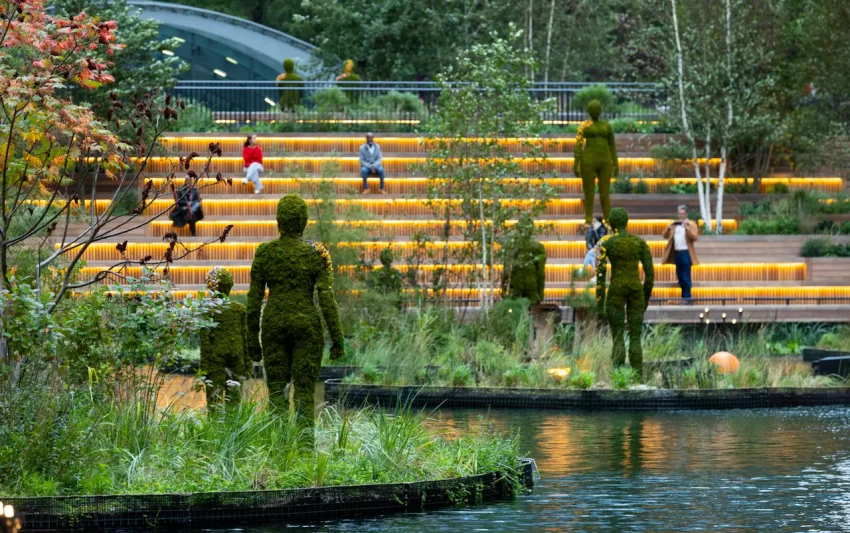Canary Wharf has taken an unexpected turn in its efforts to revitalise the area, welcoming European eels and songbirds as part of a new initiative to boost biodiversity and enhance the appeal of its waterside environment.
This latest move comes as the office district grapples with a post-pandemic decline in occupancy, as remote working reshapes the needs of businesses and employees.
The Eden Dock project, launched on Wednesday, is a joint venture between Canary Wharf Group and Cornwall’s Eden Project. It aims to reintroduce diverse wildlife, including wading birds, waterfowl, and bees, as well as plants rarely seen in London. European eels, herons, and aquatic species now inhabit floating and submerged habitats, while kelp forests anchor the project’s commitment to increasing biodiversity.
Bird boxes have also been installed, encouraging species such as the black redstart to make Canary Wharf their home. The project hopes to attract foraging bats and nesting birds, providing an eco-friendly urban space for workers and residents alike.
Set against the backdrop of the iconic district, the waterside garden features more than 20 humanoid sculptures made of Ligustrum shrubs, along with new boardwalks, enhancing the area’s aesthetic appeal. Situated near the Jubilee Line station and the YY London tower – previously home to Thomson Reuters – Eden Dock aims to transform the district from a primarily business-focused hub into a vibrant and sustainable urban environment.
As Canary Wharf struggles to adapt to the rise of remote working, efforts to introduce greenery and wildlife are part of a broader strategy to entice office workers back to the area. Major companies such as HSBC, Clifford Chance, and Moody’s are preparing to leave the district, while Barclays and Morgan Stanley are downsizing their office spaces. The impact of this exodus has been significant, with empty office spaces and reduced rental demand, even at discounted rates.
In light of these challenges, Canary Wharf Group is also exploring new opportunities to attract residents and diversify its tenant base. Plans include converting some of its office towers into laboratories to attract pharmaceutical companies, as well as increasing the residential population in the area. These shifts are seen as crucial to the district’s long-term sustainability.
Shobi Khan, CEO of Canary Wharf Group, described the Eden Dock project as an important step in promoting well-being and environmental consciousness. He pointed to research from Censuswide, which found that 73% of office workers prefer locations near water and green spaces, underscoring the potential appeal of this new development.
Sir Tim Smit, co-founder of the Eden Project, believes the focus on nature and beauty will contribute to a stronger sense of community for those who work, live, and visit the area. Mark Carney, former Bank of England governor and chair of Canary Wharf’s co-owner, Brookfield Asset Management, echoed these sentiments, stating that the project exemplifies a balance between economic development and environmental preservation, helping to create a sustainable urban environment fit for the future.
The Eden Dock project is part of a broader partnership between Canary Wharf Group and the Eden Project, which began in 2022. As the district faces financial pressures and a shifting work landscape, this collaboration aims to reinvent Canary Wharf as a dynamic and resilient urban ecosystem.

